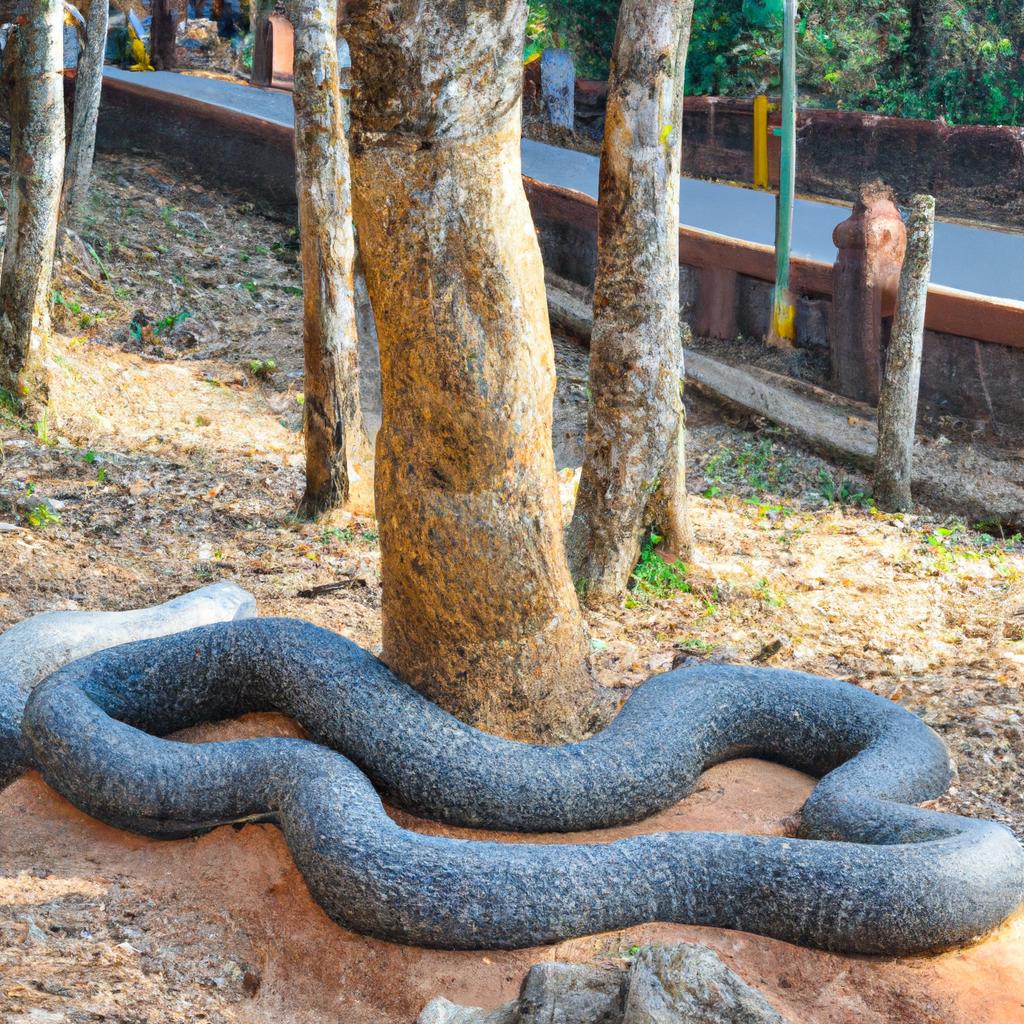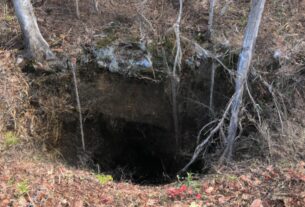As humans, we have always been captivated by the allure of mythical creatures. Among them, the giant serpent stands as an enduring fascination. For centuries, these majestic creatures have found a place in our imagination across different cultures. In this article, we will embark on a journey to explore the world of giant serpents, uncovering their history, biology, and cultural significance.
A Closer Look at Giant Serpents
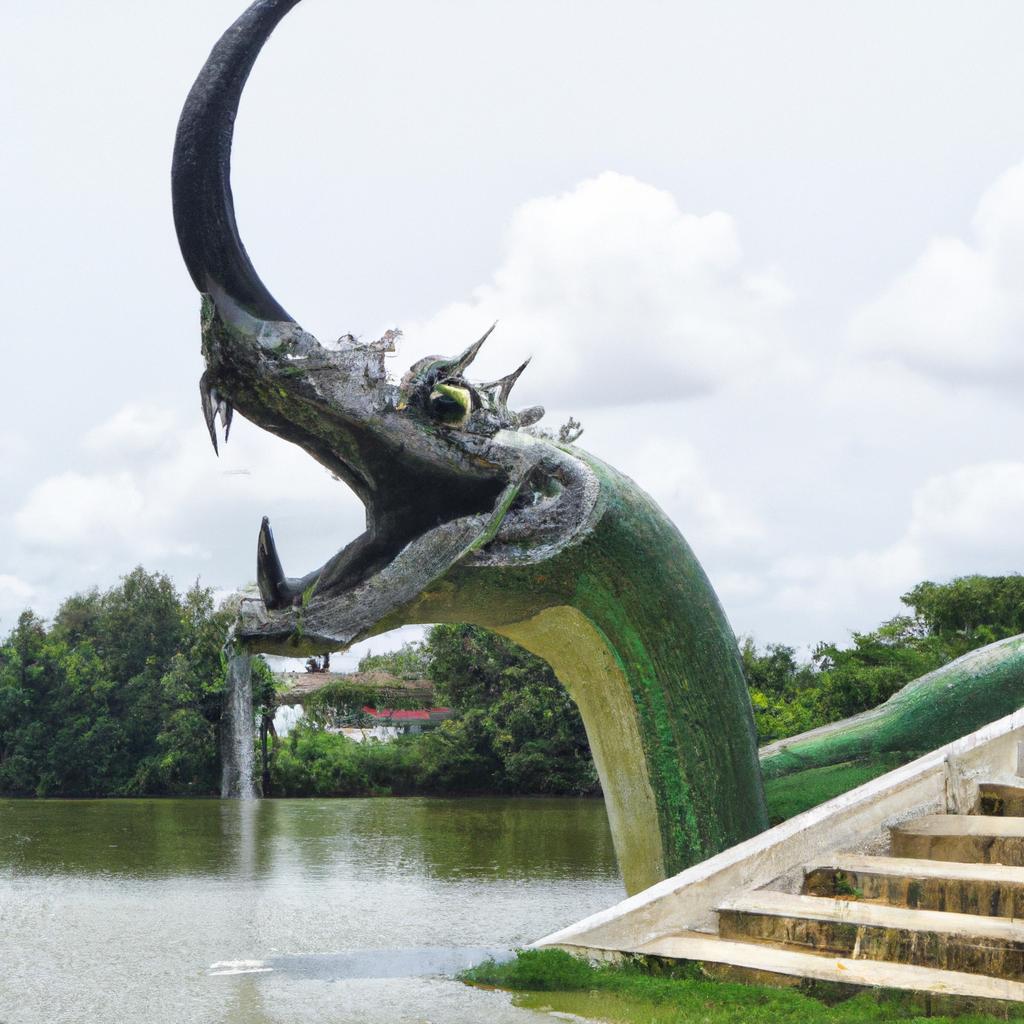
A giant serpent is a mythical creature often depicted as a colossal, snake-like animal possessing immense size and strength. These awe-inspiring creatures are attributed with supernatural abilities, capable of controlling the elements and influencing human behavior. In various cultures, giant serpents symbolize fertility, wisdom, or even embody the essence of evil.
Tracing the Historical and Cultural Significance

Giant serpents have played a significant role in human mythology for millennia, revered as sacred animals intertwined with deities and spiritual beliefs. For instance, ancient Egyptian mythology associates the serpent god Apophis with chaos and destruction, while the Hindu goddess Manasa embodies fertility and protection.
Throughout literature and art, from biblical tales to J.R.R. Tolkien’s epic “The Lord of the Rings,” giant serpents have left their mark. Legends and folklore infused with diverse interpretations of their symbolism and meaning continue to enrich our cultural heritage.
Giant Serpents in Modern Times

Although mythical, giant serpents persistently captivate our modern imagination. They permeate popular culture through movies, TV shows, video games, and novels. Astonishingly, reports of sightings and encounters with giant serpents persist, fueling the belief that these creatures may exist in some form.
In recent years, giant serpents have become a captivating subject in the field of cryptozoology – the study of rumored animals without scientific proof. These creatures continue to fascinate people worldwide, preserving their significance as part of our cultural heritage.
Unveiling Myths and Legends
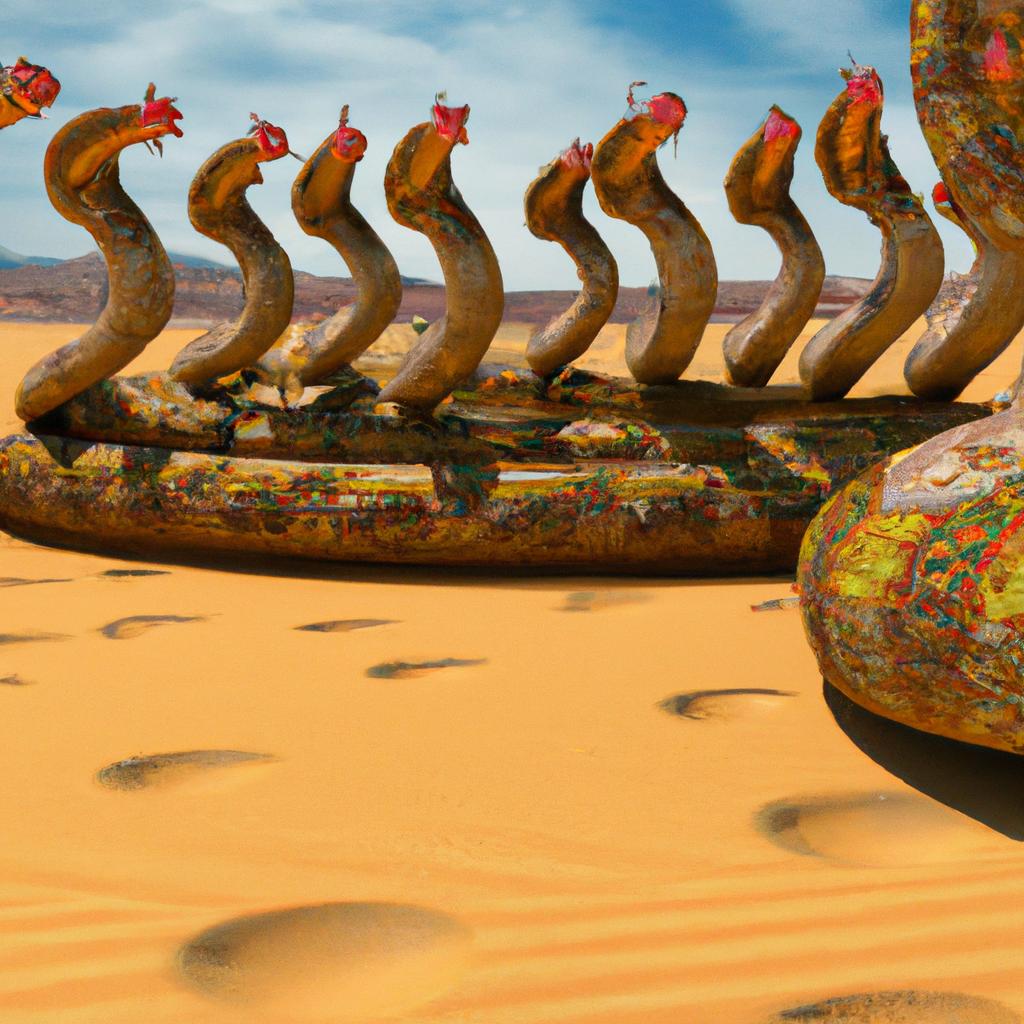
Giant serpents have assumed pivotal roles in myths and legends across the globe. From ancient Greek lore to the indigenous tribes of South America, these stories abound. Let us delve deeper into the origins of giant serpent mythology, the diverse perspectives of different cultures, and the profound symbolism and meanings behind these magnificent creatures.
Origins of Giant Serpent Mythology
The origins of giant serpent mythology trace back to humanity’s earliest civilizations. In ancient Mesopotamia, the primordial chaos of creation was symbolized by the goddess Tiamat, depicted as a colossal serpent. The Greeks, on the other hand, had their own giant serpent myth in the form of the Hydra – known for its deadly venom and multiple heads.
Water is often associated with giant serpents in many cultures. In Hindu mythology, Vasuki, the serpent god, resides in the ocean’s depths, controlling its waves. Across indigenous South American cultures, giant serpents safeguard rivers, ensuring their protection.
Different Cultures’ Versions of Giant Serpents
Various cultures have forged their unique versions of giant serpents, each holding distinct characteristics and symbolism. In Chinese mythology, the giant serpent is known as the “Dragon,” symbolizing power, wealth, and good fortune. Norse mythology introduces Jormungandr, the colossal serpent seen as an omen signaling the end of the world.
In African cultures, giant serpents are associated with death and the afterlife. Ancient Egyptians believed that the god Apophis would consume the sun each night, plunging the world into darkness and chaos. Through Native American folklore, giant serpents embody wisdom and power, acting as intermediaries with the spirit realm.
Symbolism and Meanings Behind Giant Serpent Myths
The symbolism and meanings attributed to giant serpent myths vary significantly among cultures. In many societies, giant serpents symbolize fertility and rebirth, embodying the cyclic nature of life and death. Yet, in other cultures, they represent evil and destruction, epitomizing chaos and the forces of darkness.
Some cultures believe giant serpents possess healing powers, extracting their venom for traditional medicinal purposes. Others associate these magnificent creatures with knowledge and wisdom, symbolizing the attainment of higher consciousness.
Overall, giant serpent myths have become an indispensable aspect of our cultural fabric, reflecting our deepest fears, desires, and beliefs.
Exploring the Scientific Perspective
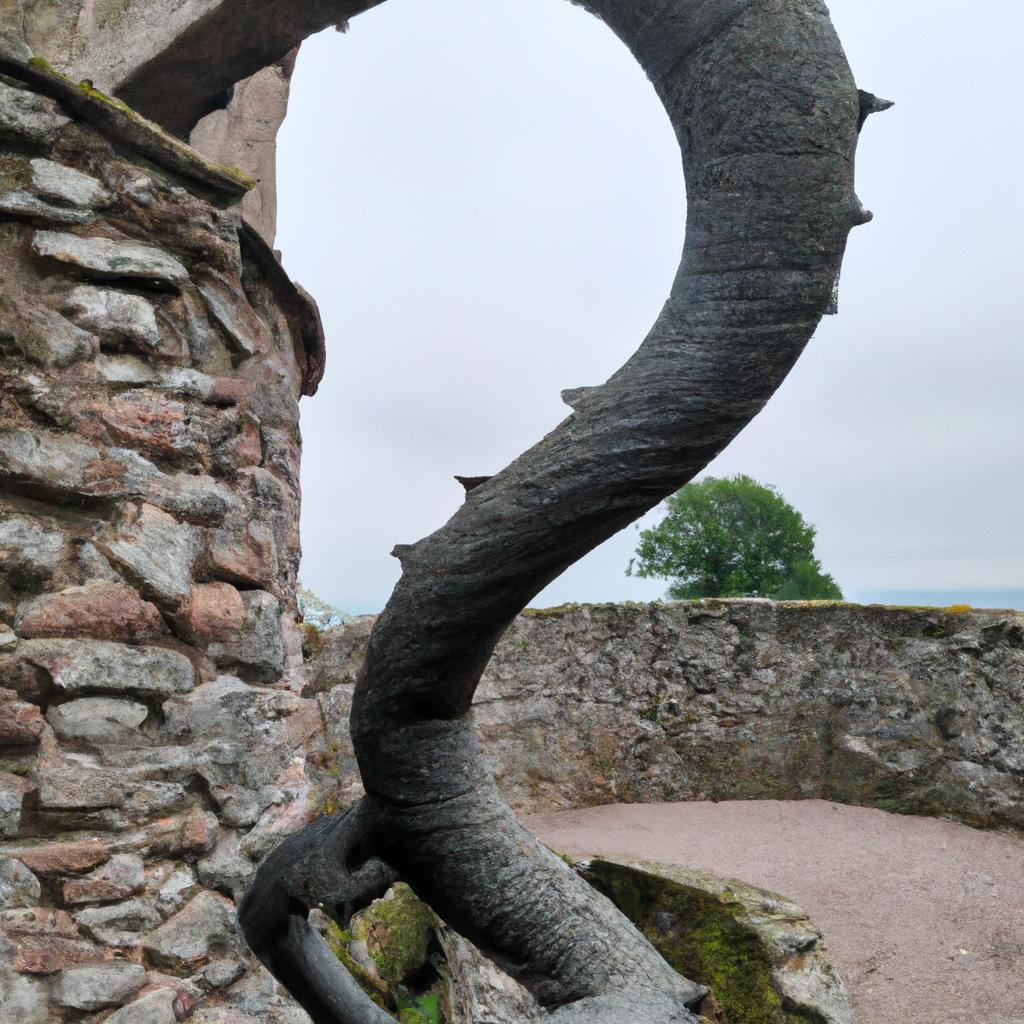
While giant serpents remain confined to mythology, some still hold beliefs in their potential existence. In this section, we will explore the scientific perspective of giant serpents, examining evidence, biology, and possible explanations for reported sightings and encounters.
Evidence of Giant Serpent Existence
Although tangible scientific evidence remains elusive, throughout history, numerous sightings of giant serpents have been reported. For instance, the Loch Ness Monster, often described as a giant serpent, has captured public intrigue for centuries, with individuals claiming photographic or video evidence of its presence.
Ancient depictions of giant serpents in artwork and sculptures are often viewed as evidence of their past existence. However, these depictions are open to interpretation and lack concrete verification.
Biology and Characteristics of Giant Serpents
If giant serpents were to exist, their biology and characteristics would likely align with those of known snake species. They would possess the typical traits of cold-blooded creatures, reliant on external heat sources to regulate body temperature. Their bodies would be covered in scales, protecting against injury and moisture loss.
Giant serpents would range in size from 30 to 100 feet, with some accounts even describing larger specimens. They would boast powerful muscles and a flexible spine, enabling swift movement across land or through water.
Possible Explanations for Sightings and Encounters
Though solid evidence is lacking, several explanations have been proposed to account for reported giant serpent sightings. Misidentification of known animals, such as large eels or fish, stands as one possibility. Furthermore, optical illusions, hallucinations, or hoaxes may contribute to some sightings.
Though skepticism persists within the scientific community, the allure of giant serpents remains. Further exploration and study are crucial, shedding light on their place in our cultural heritage and unraveling the mysteries of the natural world.
Giant Serpent Sightings
Reports of giant serpent sightings have permeated history, with some accounts dating back centuries. These sightings span the globe, with certain cultures harboring stronger beliefs in these majestic creatures. Let us embark on a closer examination of some renowned giant serpent sightings throughout history.
Famous Giant Serpent Sightings Throughout History
One of the most renowned sightings emerged in the early 19th century near Lake Champlain, which borders the United States and Canada. Sailors claimed to have encountered a creature exceeding 100 feet in length, sporting a serpent-like appearance. This sighting, known as the “Champ” sighting, has intrigued cryptozoologists for years.
In the early 1900s, an explorer named Carl Hagenbeck reported a giant serpent sighting in the Congo. He described the creature as over 50 feet long, but, despite his report to the British Museum of Natural History, the creature was never found.
Recent Sightings and Encounters
Modern times have witnessed a continuation of reported giant serpent sightings, often occurring near bodies of water. In 2014, a group of fishermen in the Amazon claimed to have witnessed a giant serpent measuring over 30 feet. The creature was seen swimming near their boat before disappearing beneath the surface.
In 2015, a woman reported seeing a creature over 20 feet long with a serpent-like appearance in California’s Lake Tahoe. She managed to capture a video of the enigmatic creature, which experts have analyzed, yet its definitive identification remains elusive.
Analysis and Explanation of Reported Sightings
While some giant serpent sightings can be explained as misidentifications or hoaxes, others remain unexplained. Cryptozoologists and experts tirelessly study these accounts, aiming to validate them and unearth possible explanations.
Some propose the existence of unknown species yet to be scientifically discovered, while others associate sightings with cultural beliefs and legends, where perception often shapes what individuals witness.
Irrespective of explanations, giant serpent sightings continue to intrigue and captivate people worldwide. While their existence remains enigmatic, their place in human mythology and culture remains indisputable.
Cultural Impact
Giant serpents have left an indelible mark on human culture throughout history. They have inspired art, literature, and popular culture, becoming a symbol of awe and mystique. Let us explore the various ways giant serpents have influenced our society.
Influence on Literature, Art, and Popular Culture
Countless literary and artistic works incorporate giant serpents, from ancient myths to contemporary movies, TV shows, and video games. Literature portrays giant serpents as heroes and villains, delving into their supernatural abilities and symbolism. Examples include J.K. Rowling’s portrayal of the basilisk in the Harry Potter series and Herman Melville’s comparison of the white whale to a giant serpent in “Moby-Dick.”
Artistic depictions of giant serpents have graced paintings, sculptures, and other forms of creative expression. Among these, Gustav Klimt’s painting “The Tree of Life,” featuring a giant serpent coiled around a tree, stands as an iconic representation.
Popular culture has eagerly embraced giant serpents in movies, TV shows, and video games. Films such as “Anaconda,” TV series like “Supernatural,” and video games including “God of War III” all draw upon the mystique and allure of these majestic creatures.
Use of Giant Serpent Imagery in Marketing and Advertising
The imagery of giant serpents has also been harnessed in marketing and advertising, effectively promoting various products and services. The immense power, danger, and mystery associated with these creatures resonate deeply. Energy drink brand “Monster” utilizes a giant serpent as its logo, while automobile manufacturer “Dodge” has integrated serpent imagery into its advertising campaigns.
Role in Tourism and Attraction of Visitors
Giant serpents have successfully attracted tourists to locations steeped in legends and sightings. Travelers embark on journeys to explore the myths and folklore associated with these majestic creatures. One such example is Scotland’s Loch Ness, renowned for alleged sightings of the Loch Ness Monster, a giant serpent-like creature.
In conclusion, the cultural impact of giant serpents remains unparalleled. Their influence permeates literature, art, marketing, and tourism. As a result, they continue to captivate our imagination, contributing profoundly to our cultural heritage.
Conclusion
In summary, the giant serpent stands as an enduring mythical creature that has captivated our collective imagination for centuries. Our exploration of their origins, biology, and cultural significance has shed light on their pivotal role in human mythology and folklore.
Though scientific evidence of their existence remains scarce, reports of sightings and encounters with giant serpents continue to intrigue and ignite debate. Consequently, the study of these creatures remains a subject of great interest for both cryptozoologists and enthusiasts alike.
At TooLacks, we recognize the importance of delving into myths and legends, such as the giant serpent, as a means to understand our cultural heritage. Whether mere mythology or rooted in truth, these enchanting creatures have forever shaped our imagination and storytelling.
We hope this article has unveiled the captivating world of giant serpents, igniting your curiosity to delve deeper into the realm of these fascinating mythical creatures. Thank you for reading, and stay tuned for more captivating content on TooLacks!
